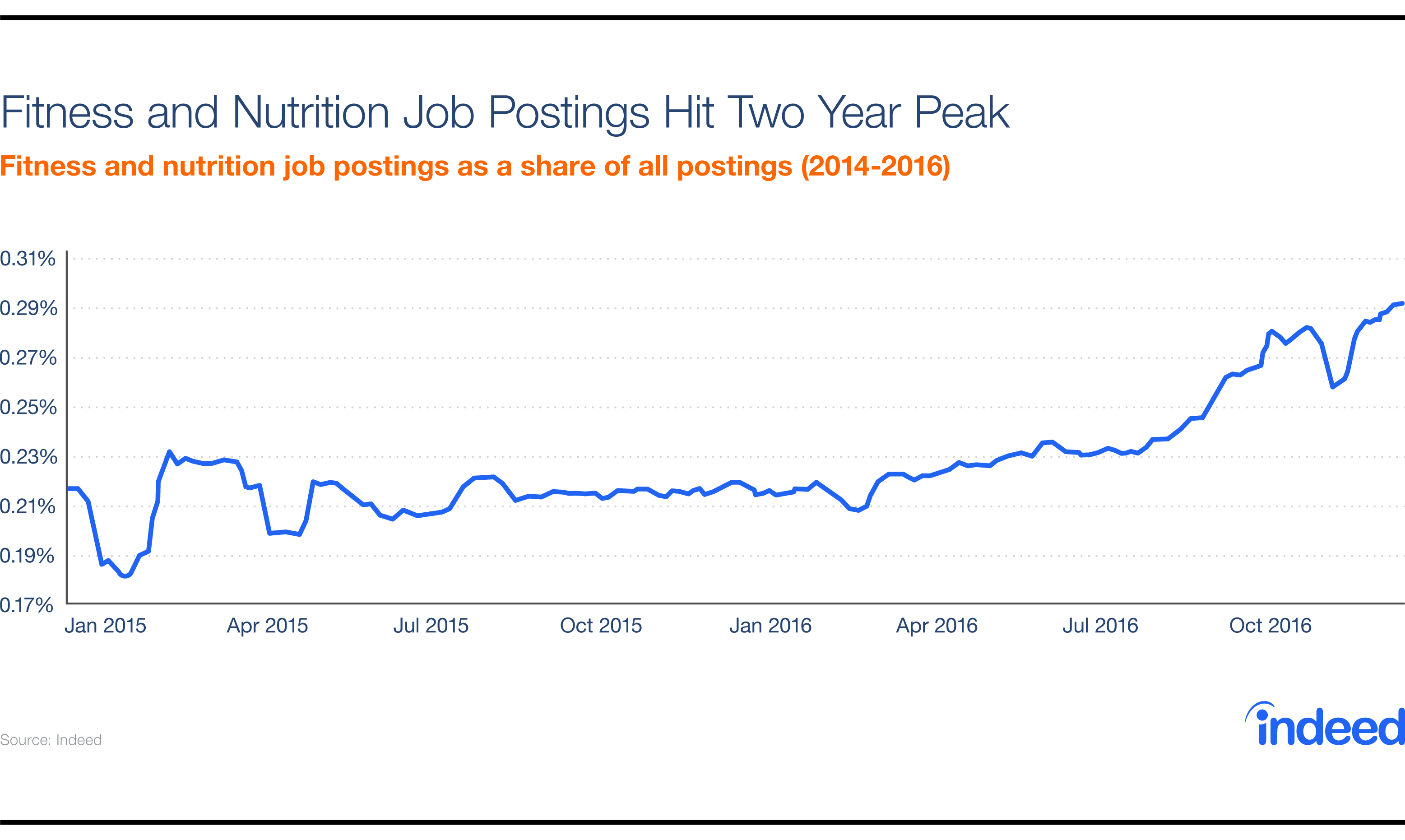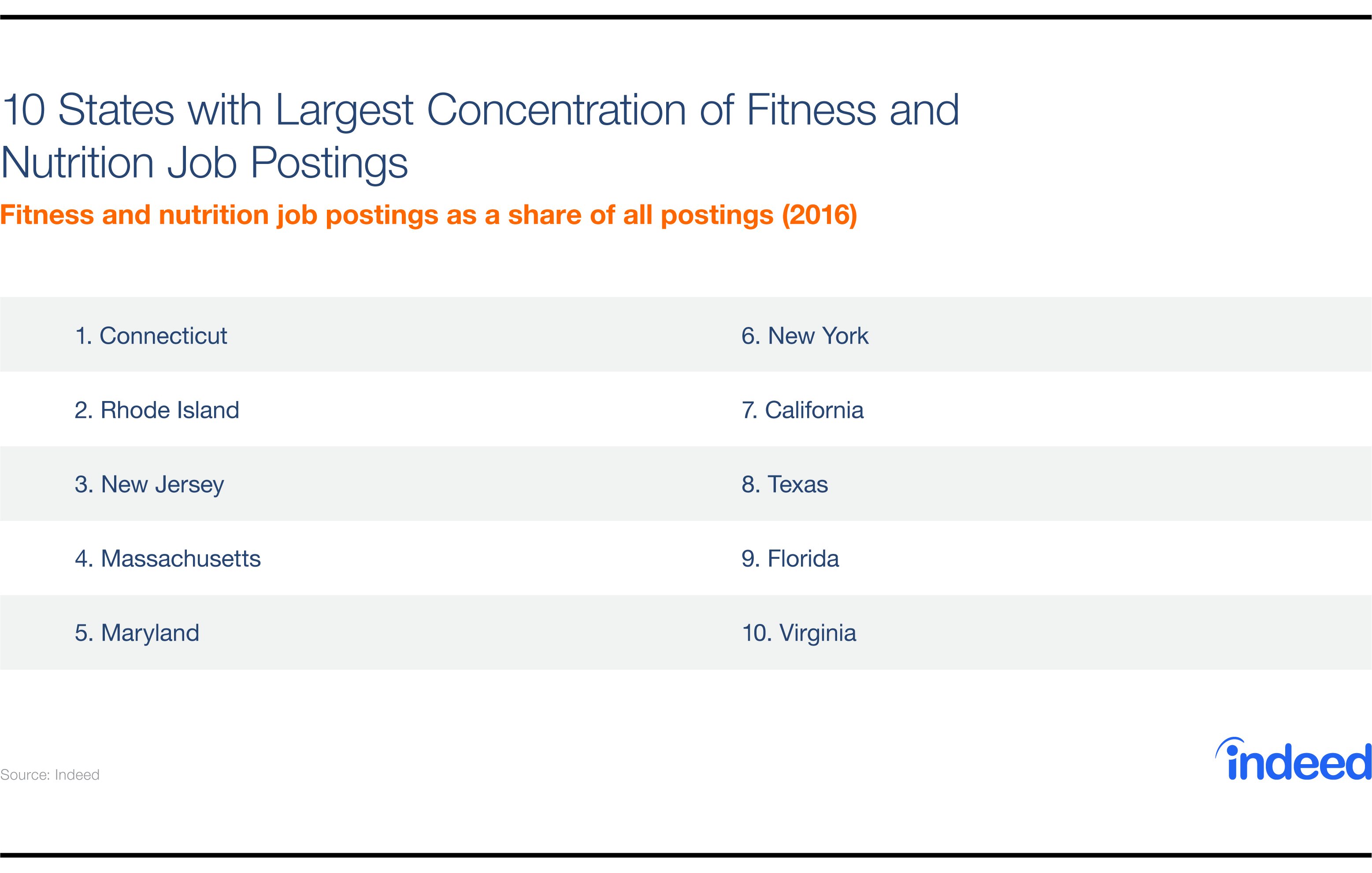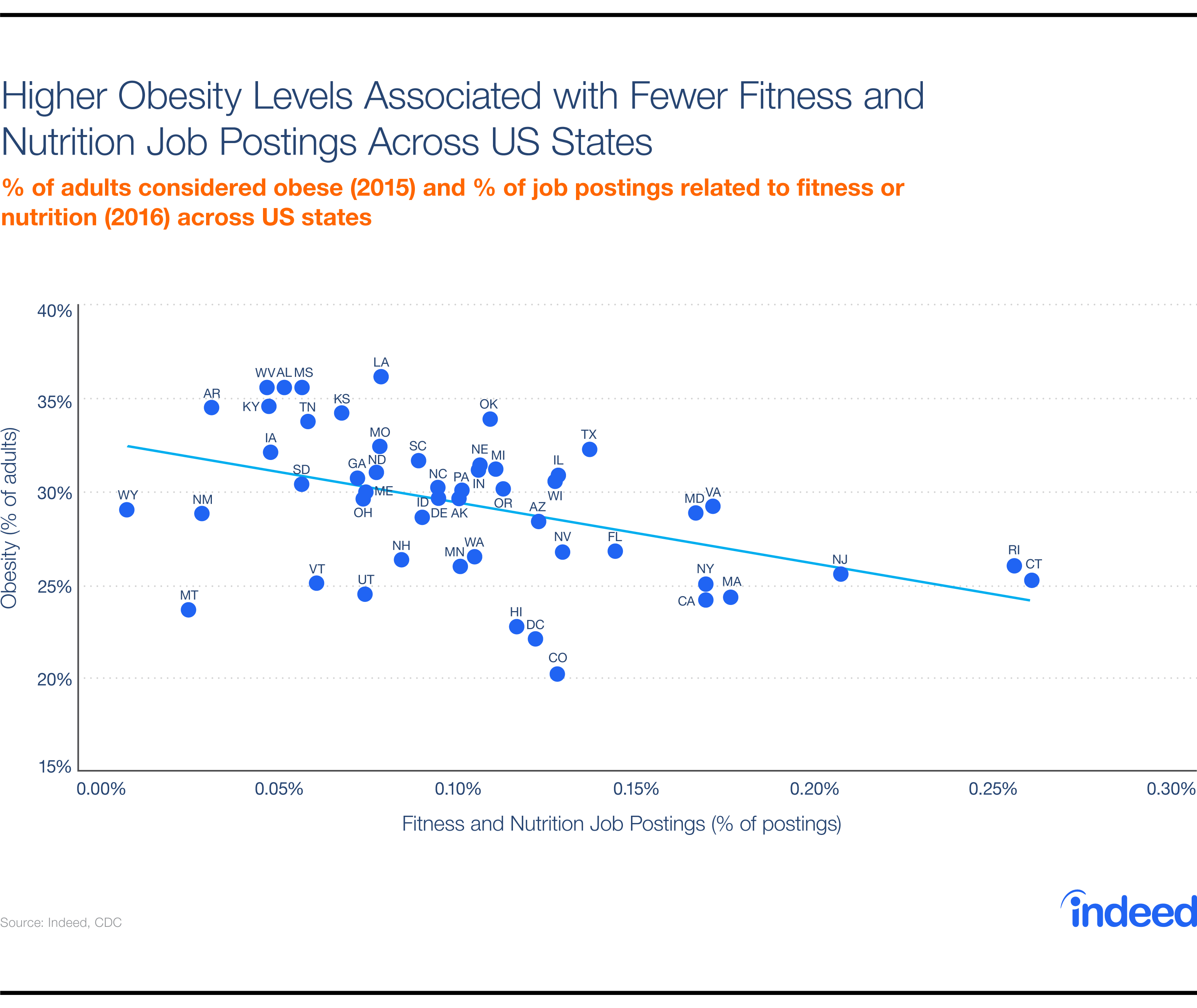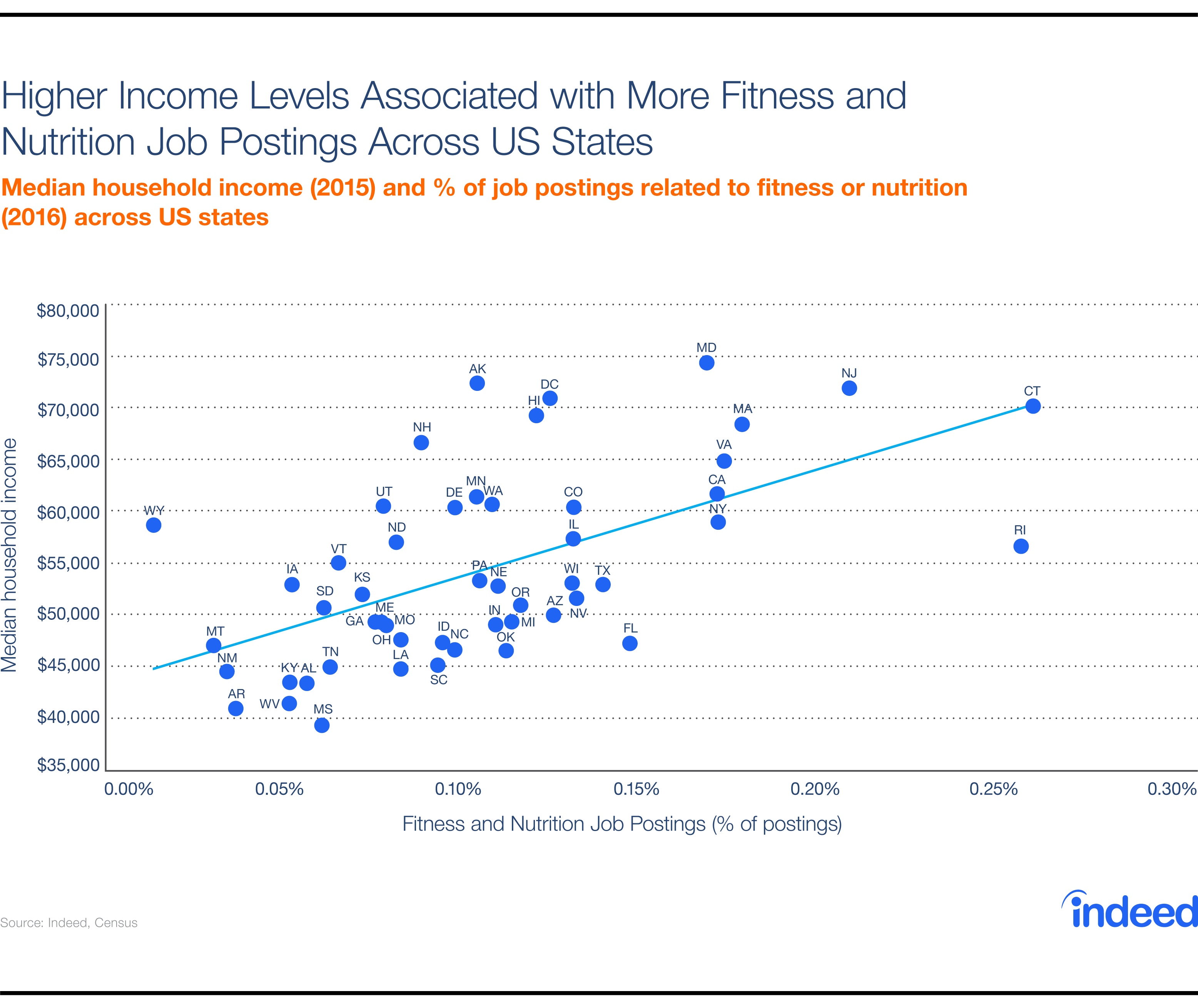Each year at Thanksgiving the great American tradition of holiday overeating begins—only to be followed by furious outbreaks of remorse and resolution-making on January 1st, of course.
During this post-holiday aftermath, gym memberships jump and the tills of the multibillion dollar fitness industry ring a little more loudly, but overindulgence is not just a seasonal trend. In fact, the “obesity epidemic” fueled by diet and lifestyle has been raging for decades. And it’s getting worse: the Center for Disease Control and Prevention (CDC) predicts that by 2030 42 percent of US adults will be obese — up from 15% in 1990.
But as waistlines continue to expand, we also see rising demand for fitness and nutrition professionals on Indeed—although there are significant regional variations. Let’s take a closer look at the data and what it can tell us about the state of the nation’s fitness as we enter 2017.
Fitness and nutrition jobs at their highest point in two years
The jobs market for fitness and nutrition professionals is robust, as the chart below indicates. In fact, demand has risen an impressive 35% since January 2015.

The majority of these postings are on the fitness rather than the nutrition side of the equation — there is a 65%/35% split. In fact, seven of the most in-demand fitness and nutrition positions are fitness-related, with trainer coming first (dietitian places second).
Of course, the majority of new year’s resolutions regarding getting in shape are quickly broken. And interestingly we see that, despite the annual blowout, demand is not tied to the season—and this is not the only surprise in the data.
States with the highest concentration of fitness and nutrition jobs
When we look at the regional data, we see some interesting patterns: just as different states have different obesity rates, so they have varying levels of demand for fitness and nutrition professionals. The table below shows the states with the highest number of postings.

Northeastern states occupy the top six positions — in fact, not until we reach seventh place California do we see any regional diversity. However, these states have something more significant than their location on a map in common. Although all of them have seen obesity levels rise in recent decades, they actually compare pretty well to the other 40 states.
For instance, Connecticut, which places first for demand for fitness and nutrition professionals, ranks 42nd for obesity. Meanwhile second place for demand Rhode Island ranks 40th for obesity. Seventh place California is one of the least obese states in the nation — the CDC puts it at #47 on its list. Only 8th place for demand Texas ranks highly for obesity — it is eleventh nationwide, according to the CDC.
In fact, we find that there is a strong negative correlation between the prevalence of obesity and the concentration of fitness and nutrition job postings across states.

In other words, in states where a larger percent of the adult population is obese, it is likely that the concentration of fitness and nutrition job openings will be smaller. This means that many of those most in need of help will have the hardest time finding it.
High income states have the best access to fitness and nutrition professionals
But low obesity levels aren’t the only thing that states with high demand for fitness and professionals tend to share: they are also richer. For instance, Connecticut is not only the state with the highest concentration of fitness and nutrition postings nationwide — it also has the fifth highest median household income in the US, according to the census. Other wealthy states in the top 10 include Maryland (#1 for median income), New Jersey (#3 for median income) and Massachusetts (#7 for median income).
Meanwhile, when we analyze the data for all US states we find a strong correlation between lower incomes and fewer job postings for fitness and nutrition professionals.

For instance, Wyoming has the fewest job postings for fitness and nutrition professionals, but only ranks towards the middle for obesity, placing 30th according to the CDC. More strikingly, it only ranks 17th for median income. Montana, which has the second lowest demand for fitness and nutrition professionals on Indeed, is actually one of the least obese states in the nation, ranking 48th—but it also one of the poorest, placing 40th for median household income. In Arkansas however both metrics combine —6th for obesity and 50th for income.
Of course, the relationship between lower incomes and obesity is not news. For instance, according to the Trust for America’s Health almost 33% of adults without a high school education are obese versus 21.5% for those who graduated from college or technical college.
Likewise the Food Research and Action Center reports that low income neighborhoods have less access to farmer’s markets and grocery stores with a wide range of options than those with more money, and low income families are more likely to buy cheap but “energy dense” unhealthy food instead of fresh fruits and vegetables.
However the data on where demand for fitness and nutrition jobs are most prevalent adds a new angle to the existing data. It’s not where the health needs are the greatest, but rather where people can afford them that we see the highest number of postings for trainers and nutritionists. And so not only are people with lower incomes more likely to follow lifestyles that lead to obesity— they also have fewer options to find the professional help that enables them to get healthier.







